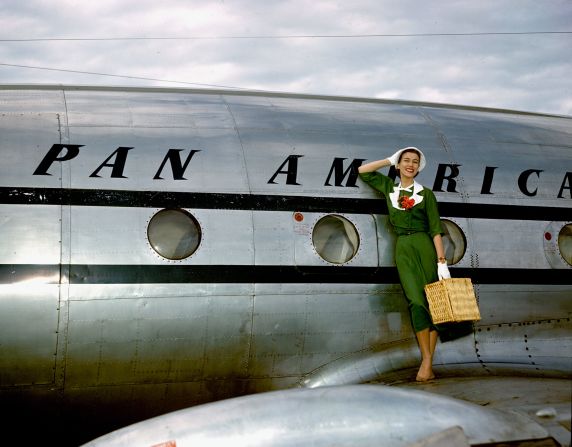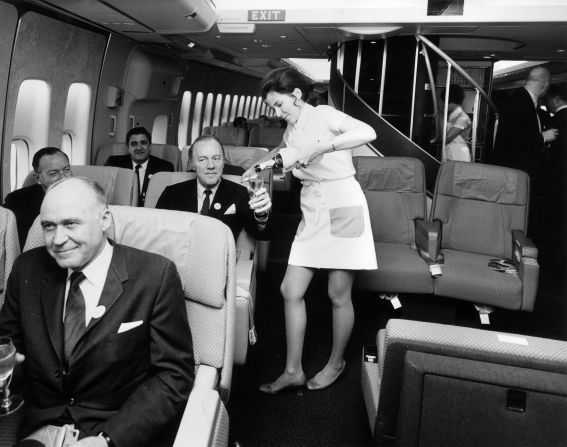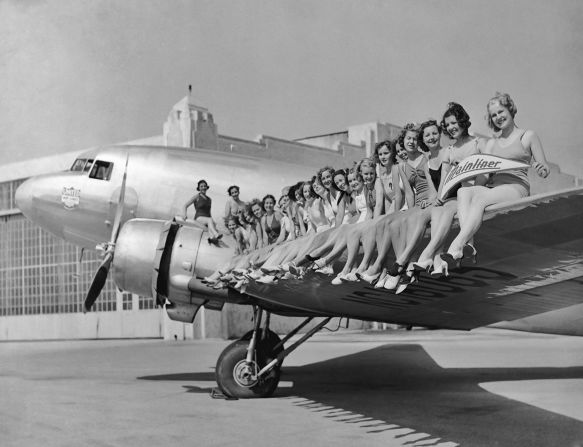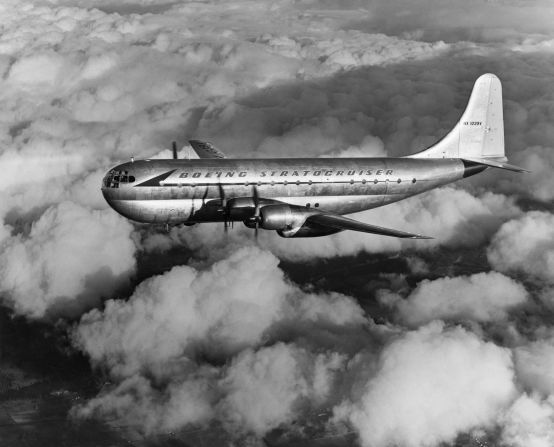Long lines at security checkpoints, tiny plastic cups of soda, small bags of pretzels, planes filled to capacity, fees attached to every amenity – all reflect the realities of 21st century commercial air travel. It’s no wonder that many travelers have become nostalgic for the so-called “golden age” of air travel in the United States.
During the 1950s, airlines promoted commercial air travel as glamorous: stewardesses served full meals on real china, airline seats were large (and frequently empty) with ample legroom, and passengers always dressed well.
After jets were introduced in the late 1950s, passengers could travel to even the most distant locations at speeds unimaginable a mere decade before. An airline trip from New York to London that could take up to 15 hours in the early 1950s could be made in less than seven hours by the early 1960s.
But airline nostalgia can be tricky, and “golden ages” are seldom as idyllic as they seem.
Until the introduction of jets in 1958, most of the nation’s commercial planes were propeller-driven aircraft, like the DC-4. Most of these planes were unpressurized, and with a maximum cruising altitude of 10,000 to 12,000 feet, they were unable to fly over bad weather. Delays were frequent, turbulence common, and air sickness bags often needed.
Some planes were spacious and pressurized: the Boeing Stratocruiser, for example, could seat 50 first class passengers or 81 coach passengers compared to the DC-3’s 21 passengers. It could cruise at 32,000 feet, which allowed Stratocruiser to fly above most bad weather it encountered. But only 56 of these planes were ever in service.
While the later DC-6 and DC-7 were pressurized, they still flew much lower than the soon-to-appear jets – 20,000 feet compared to 30,000 feet – and often encountered turbulence. The piston engines were bulky, complex and difficult to maintain, which contributed to frequent delays.
For much of this period, the old saying “Time to spare, go by air” still rang true.
Through the 1930s and into the 1940s, almost everyone flew first class. Airlines did encourage more people to fly in the 1950s and 1960s by introducing coach or tourist fares, but the savings were relative: less expensive than first class, but still pricey. In 1955, for example, so-called “bargain fares” from New York to Paris were the equivalent of just over $3,200 in 2023 dollars. Although the advent of jets did result in lower fares, the cost was still out of reach of most Americans. The most likely frequent flier was a white, male businessman traveling on his company’s expense account, and in the 1960s, airlines – with young attractive stewardesses in short skirts – clearly catered to their most frequent fliers.
The demographics of travelers did begin to shift during this period. More women, more young people, and retirees began to fly; still, airline travel remained financially out-of-reach for most.
If it was a golden age, it only was for the very few.
People also forget that well into the 1960s, air travel was far more dangerous than it is today. In the 1950s and 1960s US airlines experienced at least a half dozen crashes per year – most leading to fatalities of all on board. People today may bemoan the crowded airplanes and lack of on-board amenities, but the number of fatalities per million miles flown has dropped dramatically since the late 1970s, especially compared to the 1960s. Through at least the 1970s, airports even prominently featured kiosks selling flight insurance.
And we can’t forget hijackings. By the mid-1960s so many airplanes had been hijacked that “Take me to Cuba” became a punch line for stand-up comics. In 1971 D.B. Cooper – a hijacker who parachuted from a Boeing 727 after extorting $200,000 – might have been able to achieve folk hero status. But one reason US airline passengers today (generally) tolerate security checkpoints is that they want some kind of assurance that their aircraft will remain safe.
And if the previous examples don’t dull the sheen of air travel’s “golden age,” remember: in-flight smoking was both permitted and encouraged.

Janet Bednarek is a professor of history at University of Dayton.
Republished under a Creative Commons license from The Conversation.





